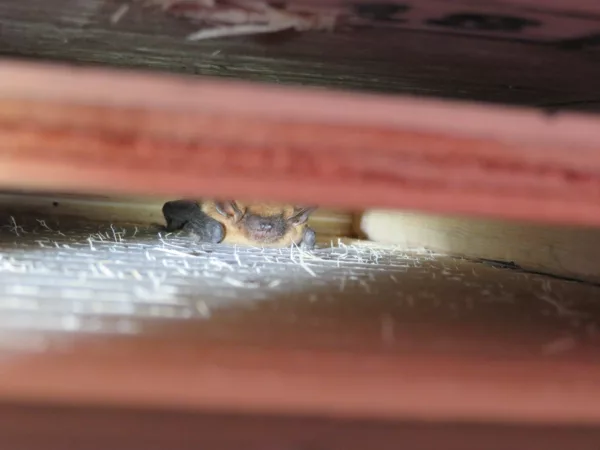Gadd’s Truth: Why I Hate Hammocks

I hate hammocks. Hate is a strong word in today’s world, but I would burn them all if I could.
These feelings first started when a hammock tried to kill me in my sleep. It was a model meant to allow “restful” nights on big-wall rock-climbs—before the invention of porta-ledges—but it closed over my face and cut off my already meager oxygen supply, lulling me into a hypoxic death spiral of darkness.
I probably would have suffocated if the hammock hadn’t also inexorably forced my shoulders together like a boa constrictor eating a deer until the pain cut through the oxygen deprivation and I awoke screaming. Then it started raining, and the hammock neatly accumulated and funnelled the water underneath my butt, rather than shedding it outward as promised in the manual. I never actually used it on a real climb because I’d rather keep ascending in a dangerous zombie state for days than sleep in a device that was clearly out to murder me.
I should have learned, but a few years later I tried out another hammock at a backyard barbecue. The rigging looked sub-standard, but my host assured me it had held him and his girlfriend. At first it held me, but when Zorro (30 kilograms of ADHD Labrador, named after the swordsman who also left his mark) joined me, the whole rig collapsed in a blur of broken plants, old beer bottles, unfinished paintings (people always leave stuff under hammocks), dog fur and chaos.
In soft-focus images, hammocks look safe enough—but don’t be fooled. They are only suspended from two non-redundant points, and if either blows, the whole mess comes crashing down. This offends the guide and rigger in me almost as much as a rappel anchor rigged in the same way. People have died by rigging their rappel anchors incorrectly, where one failure point means the rope slips out of the whole system—why is this tolerated for suspending people above the ground? As any young climber should learn, when anchor points are at less than 120 degrees relevant to the load, the anchor forces are dramatically multiplied. Which explains why hammock “anchors” fail so often. You need a 24 kN, six-inch tree as an industry standard minimum. And often, hammock materials are sub-standard hippie “natural” fibers clearly tied together by underpaid workers who will never have the luxury of sleeping in a hammock—and if the knots aren’t good, well, there are lots of them, right? No reason to slow down the assembly line!
But personal experience does not show the whole picture. The hammock injury statistics (yes, they exist, from the U.S. Consumer Product Safety Commission) show exactly how bad these hanging deathtraps are. More than 3,000 people are injured or killed by hammocks every year in North America. If you figure how few people (obviously, the slow learners with little respect for self-image or gravity) will get into a hammock every year and yet how many are injured, it’s clear they are far more dangerous than trampolines, swimming pools or rakes—which also rank high for accidents. Incidentally, women are far more likely to be hammock-victims than men. According to data, women are also more likely to be injured by stairs, plastic containers and bathtubs. Men, somehow, are far more likely than women to be injured by walls and ceilings. How men injure themselves on ceilings is unclear, but never underestimate the genius of the drinking man. (There was probably a hammock involved.)

While hammocks are clearly dangerous and should be banned for that reason alone, there’s a deeper and more sinister problem with their soft embrace. The only reason hammocks exist is to promote sloth.
Sloth, if you remember your Sunday guilt classes, is a Deadly Sin. In fact, hammocks are a favourite of the Instagram Sloth Vacation Class. If an outdoor Instagrammer posts a picture of a hammock strung between two palm trees with a scantily-clad woman in it, well, it’s going to be her most popular post of the year, as it ticks all the Insta-greed boxes at once.
As the only purpose of Instagram is to promote envy, it also neatly checks another deadly sin. In fact, I have seen lust, gluttony, greed (lying in hammocks takes money to burn as they are often found in ridiculous locations) and pride (“Look at me in my hammock on Instagram!”). I’ve got the “wrath” part of the equation covered, so hammocks neatly embody all the Seven Deadly Sins in one hanging package of poorly designed rest. Rest is for the weak, and those same Sunday classes were adamant that the devil will make work for idle hands. Hammocks are, to hammer a point often referenced by haters, against God’s will.
If the primary reason hammocks exist is so you can lounge in your own most hedonistic and slothful tendencies, then this is also clearly a feeling best enjoyed with an audience. Search #hammock on Instagram and you’ll get about 1.5 million results. Most of these images aren’t of people relaxing responsibly in their backyard, they are of hammocks strung up in the most ridiculous positions possible, or so Insta-staged that no one ever would rest there for fear of messing up the perfect netting grid and carefully hung candles (candles are also good for Insta-followers).
My special hate for public hammocking was cemented by two recent experiences. A while ago, I was happily swearing and failing while climbing at a local cliff when two buff young men and an attractive young woman arrived to climb. Or rather, the attractive young woman lounged in a hammock, flipping her hair over the side and taking selfies, while the gym-rat dudes talked shit and attempted to climb. My female climbing partners were appalled. Life is about doing, not spectating, and I wouldn’t want my daughters to aspire to a hammock-based existence.
And a little while ago, I walked out from climbing along the shores of Lake Louise, Alberta, perhaps Canada’s most iconic mountain destination. The trail is wide to accommodate the walking thousands (which is great!), but it’s occasionally throttled through a treed path only a few metres wide or so. Half of the crowd is trying to get a look at the beautiful lake and mountains and half is trying to make it back to the Fairmont’s buffet lunch, so it can get tense. Between two trees, blocking at least half of the traffic, was a hammock. A man and his girlfriend were leaned back into the pedestrian flow, facing the water while attempting to look relaxed and pretending not to notice the people banging into them and trying to get around the neck-snapping anchor cords. As a guide, I always have a sharp knife in my pack to cut nylon. If it were a rappel anchor, I’d surely have cut it down as a public service. For a moment, I felt justified hate fill my heart as I envisioned clearing the path of hammock debris. But even when justifiably hating an entire class, you must remember that it’s always about individuals in the end—so I made do with photo-bombing their selfie. I’m sure the hammock fell anyhow—karma or no karma, gravity always wins.
And yet today a gear catalog showed up, and there was a new three-point hammock that looked sweet. Greed may conquer hate in the end, and when it does I’ll be sure to Instagram a shot with my girlfriend belaying out of hammock. That would do better than a shot of me belaying, for sure, I’ll just have to convince her somehow…














